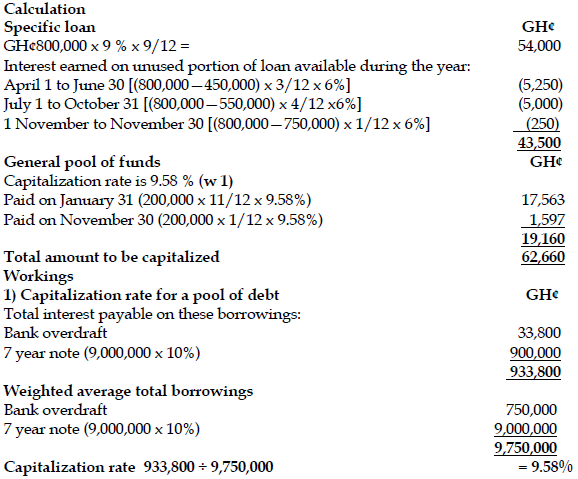May 2016 Q1 b.
Nanniama Ltd is constructing a warehouse that will take about 18 months to complete. It began construction on 1st January 2014. The following payments were made during 2014:
. GH¢’000
31st January 200
31st March 450
30th June 100
31st October 200
30th November 250
The first payment on 31st January was funded from the entity’s pool of debt. However, the entity succeeded in raising a medium-term loan for an amount of GH¢800,000 on 31st March, 2014, with simple interest of 9 percent per annum, calculated and payable monthly in arrears. These funds were specifically used for this construction. Excess funds were temporarily invested at 6 percent per annum monthly in arrears and payable in cash. The pool of debt was again used to an amount of GH¢200,000 for the payment on 30th November, which could not be funded from the medium-term loan. The construction project was temporarily halted for 3 weeks in May when substantial technical and administrative work was carried out.
Nanniama Ltd adopted the accounting policy of capitalizing borrowing costs.
The following amounts of debt were outstanding at the balance sheet date, 31st December 2014:
. GH¢’000
Medium-term loan (see description above) 800
Bank overdraft 1,200
(The weighted average amount outstanding during the year was GH¢750,000 and total interest charged by the bank amounted to GH¢33,800 for the year)
A 10%, 7-year note dated 31st October 2018 with simple interest payable annually at 31st December 9,000
Required:
Calculate the borrowing costs to be capitalized. (10 marks)
View Solution
The amount to be capitalized to the cost price of the warehouse in 2014 can be calculated as follows:

